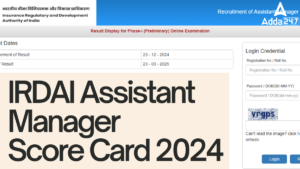Dear Aspirants,
Reasoning Questions for IBPS Exam 2019:
Reasoning Ability is an onerous section. With the increasing complexity of questions, it becomes hard for one to give it the cold shoulder. The only way to make the grade in this particular section in the forthcoming banking exams. And, to let you practice with the best of the latest pattern questions, here is the Adda247 Reasoning Quiz based on the exact same pattern of questions that are being asked in the exams.
Directions (1-5): In these questions the symbols #, ©, it, $ and % are used with different meanings as given below:
‘A# B' means ‘A is smaller than B’
‘A © B' means ‘A is greater than B’
‘A π B' means ‘A is either smaller than or equal to B’
‘A $ B’ means ‘A is either greater than or equal to B’
‘A % B’ means ‘A is neither smaller nor greater than B’
In each of the following questions, assuming the given statements to be true, find out which of the two conclusions I and II given below them is/are definitely true. Give answer
Q1.Statement: L $ M % Q © S # T π P
Conclusions: I. P©M II. P π Q
if only conclusion I is true.
if only conclusion II is true.
if either conclusion I or II is true.
if neither conclusion I nor II is true.
if both conclusions I and II are true.
Q2. Statement: W # H π I % C $ H © S
Conclusions: I. W#S II. C$W
if only conclusion I is true.
if only conclusion II is true.
if either conclusion I or II is true.
if neither conclusion I nor II is true.
if both conclusions I and II are true.
Q3. Statement: W % X © Y π Z © R % L
Conclusions: I. W © L II. X π R
if only conclusion I is true.
if only conclusion II is true.
if either conclusion I or II is true.
if neither conclusion I nor II is true.
if both conclusions I and II are true.
Q4. Statement: A # N % O π T π H # E
Conclusions: I. H % O II. H©N
if only conclusion I is true.
if only conclusion II is true.
if either conclusion I or II is true.
if neither conclusion I nor II is true.
if both conclusions I and II are true.
Q5. Statement: P © V % T # D # M $ F
Conclusions: I. D ©V II. P © T
if only conclusion I is true.
if only conclusion II is true.
if either conclusion I or II is true.
if neither conclusion I nor II is true.
if both conclusions I and II are true.
Directions (6-10): Study the following information to answer the given questions
Q6. Statements: O≤B≥T=D≤J<F>G
Only I is follow
Only II is follow
Either I or II follow
Neither I nor II follow
Both I and II are follow
Q7. Statement: Y= K, Y < H, R ≤ H, R ≤ U
Conclusions: I. H > K
II. H = K
Only I is follow
Only II is follow
Either I or II follow
Neither I nor II follow
Both I and II are follow
Q8. Statements: X≥L>A=W<P, A=T≥B<R
Conclusions: I. X≤R
II. P>B
Only I is follow
Only II is follow
If either I or II follow
If neither I or II follow
If both I and II follow
Q9. What should be placed in place of question mark(?) in equation B ≤ A ? N ? K ? S to make A > S always follow.
=, >, ≥
=, <, ≥
=, >, <
=, >, ≤
None of these
Q10.Statements: Z > C ≥ B, T = B ≤ V, Q ≥ B
Conclusions: I. C < V II. Z ≤ Q
Only I follows
Only II follows
Either I or II follows
Neither I nor II follows
Both I and II follows
Directions (11 –15): In the following questions, the symbols @, $, *, # and % are used with the following meaning as illustrated below.
‘P # Q’ means ‘P is smaller than Q’.
‘P @ Q’ means ‘P is smaller than or equal to Q’.
‘P * Q’ means ‘P is greater than or equal to Q’.
‘P % Q’ means ‘P is equal to Q’.
‘P & Q’ means ‘P is greater than Q’.
Now, in each of the following questions assuming the given statements to be true, find which of the two Conclusions I and II given below them is/are definitely true and give your answer accordingly.
Q11. Statements: I # A ; A & B & C* D@ E; B&F ;E#H ;G&D
Conclusions: I. A&D II. D#H
Only I is true
Only II is true
Neither I nor II
Either I or II is true
Both I and II are true
Solution:
I. A&D(True) II.D#H(True)
Q12. Statements: S & R & L; L & M @ N * O % P & Q ; N # T
Conclusions: I. T&Q II. T%Q
Both I and II are true
Only I is true
Only II is true
Either I or II is true
Neither I nor II true
Solution:
I.T&Q(True) II.T%Q(False)
Q13. Statements: V # P ; S % U ; W % R ; P & Q * R @ S % T
Conclusions: I. T @ W II. R* V
Only I is true
Only II is true
Neither I nor II
Either I or II is true
Both I and II are true
Solution:
I. T@W (False) II.R*V(False)
Q14. Statements: N* T * R % J & C ; L # J ; R & F # M ; N # S
Conclusions: I. F # S II. N % J
Both I and II are true
Only I is true
Only II is true
Either I or II is true
Neither I nor II true
Solution:
I.F@S(True) II. N%J(False)
Q15. Statements: F # L ; H * C # G ;A & B # C * D @ E % F
Conclusions: I. A @ L II. A & L
Both I and II are true
Only I is true
Only II is true
Either I or II is true
Neither I nor II true
Solution:
I. A@L(False) II. A&L(False)
You may also like to Read:
- Check the Study related Articles Here
- Study Notes for All Banking Exams 2018
- Bankers Adda Daily Questions for SBI PO, IBPS PO Clerk & Bank Exams






 The Hindu Review October 2022: Download ...
The Hindu Review October 2022: Download ...
 SSC Calendar 2025-26 Out, Check SSC CGL,...
SSC Calendar 2025-26 Out, Check SSC CGL,...
 IRDAI Assistant Manager Score Card 2024 ...
IRDAI Assistant Manager Score Card 2024 ...




